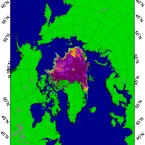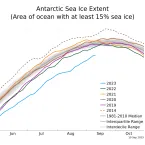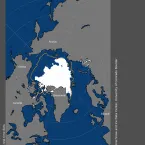Our Research
As climate changes, how do Earth's frozen areas affect our planet and impact society?
In this section
Related News & Stories
Filter by:

ELOKA Event
The Exchange for Local Observations and Knowledge of the Arctic (ELOKA) works to foster collaboration between Arctic residents and researchers.

Analysis - Sea Ice Today
A few days after the annual Arctic sea ice minimum extent was reached on September 19, the sun set at the North Pole, aiding sea ice growth.

Feature Story
Discover how scientists and community members in the hamlet of Clyde River, Canada came together to unravel the mysteries behind severe winter events and their links to climate change.

Analysis - Sea Ice Today
On September 10, Antarctic sea ice likely reached its annual maximum extent of 16.96 million square kilometers (6.55 million square miles). This is the lowest sea ice maximum in the 1979 to 2023 sea ice record by a wide margin.

Analysis - Sea Ice Today
On September 19, Arctic sea ice likely reached its annual minimum extent of 4.23 million square kilometers (1.63 million square miles). The 2023 minimum is sixth lowest in the nearly 45-year satellite record.

News Release
Antarctic sea ice has likely reached its maximum extent for the year, at 16.96 million square kilometers (6.55 million square miles) on September 10, according to scientists at the National Snow and Ice Data Center (NSIDC) at the University of Colorado Boulder. The 2023 maximum is the lowest in the 45-year satellite record.